
Nyoka the Jungle Girl is a fictional character created for the screen in the 1941 serial Jungle Girl, starring Frances Gifford as Nyoka Meredith. After the initial film, Nyoka appeared in comic books published by Fawcett, Charlton, and AC Comics.
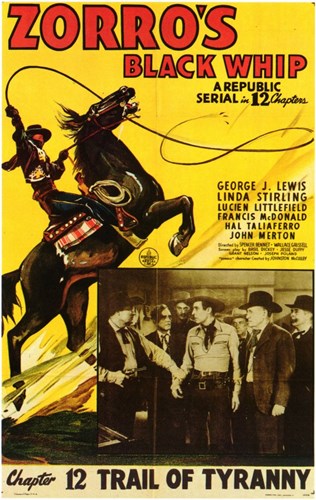
Zorro's Black Whip is a 1944 12-chapter film serial by Republic Pictures starring Linda Stirling. The film was made after the 1940 20th Century-Fox remake of The Mark of Zorro in order to capitalize on it. Republic was not able to use the character of Zorro himself, however, and despite the title, the hero(ine) is called The Black Whip throughout.

Drums of Fu Manchu (1940) is a 15-chapter Republic serial film based on the character created by Sax Rohmer. Though using the title of the ninth novel in the series, it actually is based on numerous elements from throughout the series to that point, cherry-picked by the writers. It starred Henry Brandon, William Royle and Robert Kellard. It was directed by the serial team of William Witney and John English and is often considered one of the best serial films ever made.

The Fighting Devil Dogs (1938) is a 12-chapter Republic movie serial starring Lee Powell and Herman Brix, the latter better known by his later stage name, Bruce Bennett. It was directed by William Witney and John English. While not often considered a great serial, as it contains much stock footage and two recap chapters, it is famous for its main villain, the Lightning—the first costumed supervillain. There is some speculation that George Lucas used the Lightning as a template for Darth Vader.
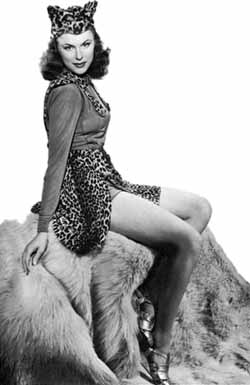
The Tiger Woman (1944) is a 12-chapter film serial by Republic Pictures starring Allan Lane and Linda Stirling. The serial was re-released in 1951 under the title Perils of the Darkest Jungle and, in 1966, it was edited into the 100-minute Century-66 film Jungle Gold.

The Adventures of Red Ryder is a 1940 American 12-chapter movie serial from Republic Pictures, directed by William Witney and John English and starring Don "Red" Barry and Noah Beery, Sr., based on the Western comic strip Red Ryder by Fred Harmon. This serial is the 18th of the 66 serials produced by Republic.

Dick Tracy's G-Men (1939) is a 15-Chapter Republic movie serial based on the Dick Tracy comic strip by Chester Gould. It was directed by William Witney and John English.

King of the Royal Mounted (1940) is a Republic Pictures northern serial based on the King of the Royal Mounted comic strip directed by William Witney and John English.

Darkest Africa (1936) is a Republic movie serial. This was the first serial produced by Republic Pictures and was a loose sequel to a Mascot Pictures serial called The Lost Jungle, also starring Clyde Beatty. Mascot, and other companies, had been taken over in 1935 by Consolidated Film Laboratories and merged to become Republic. Producer Nat Levine was formerly the owner of Mascot Pictures.
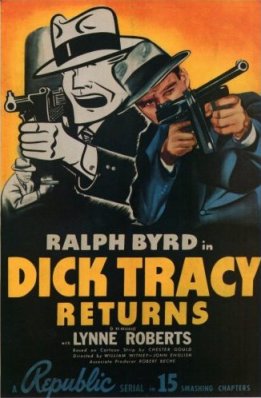
Dick Tracy Returns (1938) is a Republic Movie serial based on the Dick Tracy comic strip. It was the eleventh of the sixty-six serials Republic produced and a sequel to the 1937 serial Dick Tracy, with Ralph Byrd reprising his role as the title character. It was successful enough that two further sequels were released in 1939 and 1941, and Byrd become so connected with the character he went on to play him in a subsequent television series.

Hawk of the Wilderness (1938) is a Republic movie serial based on the Kioga adventure novels written by pulp writer William L. Chester (1907–1971). Kioga was a Tarzanesque white child raised on a lost island in the Arctic Circle, somewhere in northern Siberia, which was heated by thermal springs and unknown currents. Chester wrote four Kioga novels. The first, Hawk of the Wilderness (1935), was the one that was filmed as the 12-part 1938 Republic serial. (The other novels in the series were Kioga of the Wilderness, One Against a Wilderness and Kioga of the Unknown Land.

King of the Texas Rangers (1941) is a Republic film serial. Set in the years prior to America entering World War II, the plot is slightly anachronistic in that the serial features a mix of period western and modern elements, which was not unknown in the B-Western films also produced by Republic. Although the serial's plot involves cowboys battling Axis agents in Texas, Nazis are never named as such, but their presence is strongly implied within the serial.

Dick Tracy vs. Crime, Inc. (1941) is a Republic Movie serial based on the Dick Tracy comic strip. It was directed by the team of William Witney and John English with Ralph Byrd reprising his role from the earlier serials. It was the last of the four Dick Tracy serials produced by Republic, although Ralph Byrd went on to portray the character again in two features and on television.
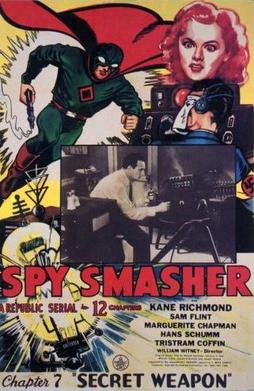
Spy Smasher is a 12-episode 1942 Republic serial film based on the Fawcett Comics character Spy Smasher which is now a part of DC Comics. It was the 25th of the 66 serials produced by Republic. The serial was directed by William Witney with Kane Richmond and Marguerite Chapman as the leads. The serial was Chapman's big break into a career in film and television. Spy Smasher is a very highly regarded serial. In 1966, a television film was made from the serial footage under the title Spy Smasher Returns.
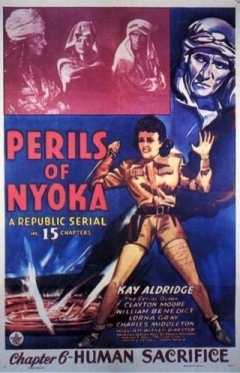
Perils of Nyoka is a 1942 Republic serial directed by William Witney. It stars Kay Aldridge as Nyoka the Jungle Girl, a character who first appeared in the Edgar Rice Burroughs-inspired serial Jungle Girl.
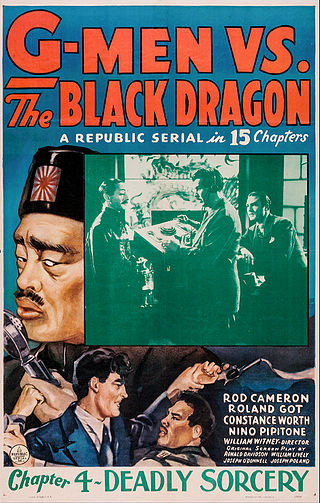
G-Men vs. The Black Dragon (1943) is a Republic Pictures movie serial. It is noteworthy among adventure serials as containing an unusually high number of fistfights, all staged by director William Witney and a team of stuntmen.

Secret Service in Darkest Africa is a 1943 Republic serial. It was Republic's 30th serial, of the 66 produced by the studio.

Jesse James Rides Again is a 1947 American Republic Western film serial.
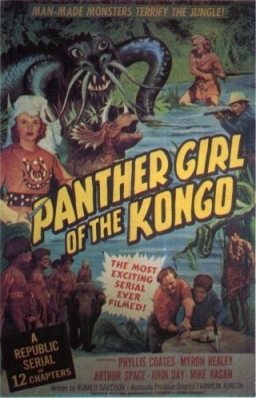
Panther Girl of the Kongo is a 1955 Republic movie serial that contains a great deal of stock footage from the 1941 Republic serial Jungle Girl. This was the penultimate of Republic's 66 serial films.
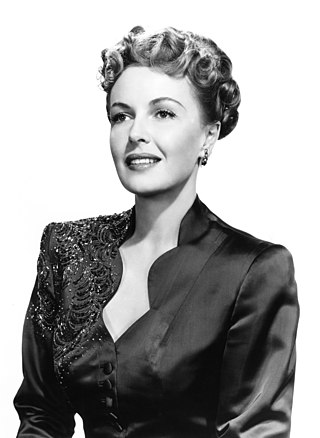
Mary Frances Gifford was an American actress who played leads and supporting roles in many 1930s and 1940s movies.















